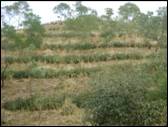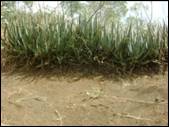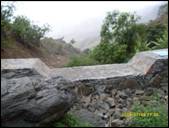Existing practices on land resources
Both mechanical and biological practices of land and water conservation have been used in the watershed.
The main mechanical methods used in the study site are:
- Terraces, and contour stone walls on slopes steeper than 20%, for fruit tree plantations, fodder and forestry species;
- Contour stone walls and contour furrows (ridges) to increase water infiltration on the slopes, reduce superficial runoff and erosion;
- Leveling of great pieces of lands, as long as the slope is less than 50%
As biological methods, the most common ones used in Cape Verde are: green belt of Aloe vera; green belts of Leucaena leucocephala; Green belts of Furcraea gigantean afforestation.
The following table describes and illustrates each technique, showing their effectiveness, advantages and limitations.
| Technique | Description | Effectiveness | Advantages | Limitations | Illustration |
| Green belt of Aloe vera (locally named "Babosa") | - Used to reduce the velocity of the water as it passes through them and not to channel the water elsewhere - This technique facilitates soil fixation through plant root. |
- When the runoff reaches the vegetative hedges, it slows down, spreads out, drops its silt load, and oozes through the hedgerows, a large portion of the water soaking into the land along the way. No soil is lost, and there is no loss of water through the concentration of runoff in particular areas. - Rainfed agriculture should be practiced between the green belts. |
- Easily executed by men or women. - Requires no engineering - Can be done by farmers themselves - Once the hedge has been established, it will neither wear out nor require further maintenance, other than periodic trimming |
|
|
| Green belt of Leucaena leucocephala (locally named "Linhaço") |
- Used to reduce the velocity of the water as it passes through them and not to channel the water elsewhere. - It facilitates soil fixation by the plant root |
- When the runoff reaches the vegetative hedges, it slows down, spreads out, drops its silt load, and oozes through the hedgerows, a large portion of the water soaking into the land along the way. No soil is lost, and there is no loss of water through the concentration of runoff in particular areas. - Rainfed agriculture should be easily practiced between the green belts. - The specie increase soil fertility with atmospheric nitrogen. |
- Easily executed by men or women. - Requires no engineering - The farmers can do the job themselves - Once the hedge has been established, it will neither wear out nor require further maintenance, other than periodic trimming |
- Can be an invasive species | 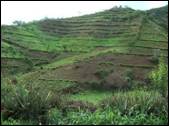 |
| Green belt of Furcraea gigantean (locally named "Karapati") |
- Used to reduce the velocity of the water as it passes through them and not to channel the water elsewhere. - It facilitates soil fixation by the plant root. |
- When the runoff reaches the vegetative hedges, it slows down, spreads out, drops its silt load, and oozes through the hedgerows, a large portion of the water soaking into the land along the way. No soil is lost, and there is no loss of water through the concentration of runoff in particular areas. | - Easily executed by men or women. - Requires no engineering - The farmers can do the job themselves - Once the hedge has been established, it will neither wear out nor require further maintenance, other than periodic trimming |
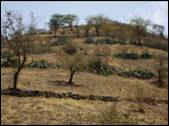 |
|
| Contour stone walls (locally named "Banketa") |
- Contour stone wall is a soil stabilizing mechanical structure built along a contour line, using medium and small sizes basaltic rock, locally found on site. The spacing between the contours depends on the topography of the treated land, and normally it is spaced between 8 to 15 meters. - This technology stabilizes the slopes, slowing and improve run off. |
- This technique is well suited for small scale application on farmer's rainfed fields. - This technique increases water infiltration and traps sediment. The water and sediment harvested improve the yield. |
- Motivates local man-power, particularly women labor, since the size of the rock are easy to carry. | - Unavailability of local stone increases the construction time and price. |  |
| Terraces (locally named "Terrasu") |
- The structures are constructed across the field slope that intercepts, detains and safely conveys runoff to an outlet | - To divide a long slope of land into a series of shorter ones in order to reduce the velocity of runoff water. - To retain the water in the land for long period so as to allow maximum water to be absorbed and held in the soil and less water flows down the slope of the land at non-erosive velocity. - To protect the soil against erosion by water. |
- Effective on erosion reduction and sediment transport. | - Expensive to build. - Construction should be under supervision of qualified technicians. - Require rock and man-power. |
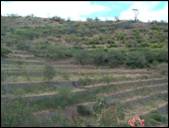 |
| Gabion check dams | - Used generally in concentrated flow areas. - Prevent erosion and promote sedimentation. - Built mainly with basaltic rock and gabions |
- Provides relatively good removal of coarse and medium size sediment runoff. - Provides sedimentation among the structures. |
- Effective on erosion reduction and sediment transport. - Require little maintenance |
- Onerous and not easy to build. - Need a lot of man-power and rock. - Construction should be under supervision of qualified technicians. |
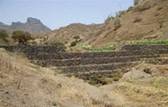 |
| Masonry check dam | - Used generally in concentrated flow areas. - Prevent erosion and promote sedimentation. - Built mainly with masonry and rock |
- Promotes sedimentation behind the dam. - To prevent erosion by reducing the velocity of channel flow in small intermittent channels and temporary swales. |
- Effective on erosion reduction and sediment transport. - Require little maintenance. - The water entrapped by the dam, surface and subsurface, is primarily intended for use in irrigation during the monsoon and later during the dry season, but can also be used for livestock and domestic needs. |
- Onerous and not easy to build. - Need a lot of man-power and rock. - Require maintenance. - Construction should be under supervision of qualified technicians. |
|
| Check dam with dry stone | - Used in secondary flow areas (affluent). - Prevent erosion and promote sedimentation. - Built mainly with dry stone - Stabilizes the slopes |
- Promotes sedimentation behind the dam. | - Cheap and easy to build. - Effective on erosion reduction and sediment transport. - Require little maintenance |
- Availability of rock | 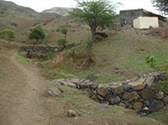 |
| Afforestation | Realized with several species according to the climate of each zone | - To improve the soil cover - Increase water infiltration - To protect the soil against water and wind erosion. - To increase dendroenergy and fruits for population |
- Temporary employment for rural population. - Effective on soil erosion - Require little maintenance - Motivates women labor. - Improve the biodiversity |
- Rainfall variability (drought) - Human pressure - Rain fed agriculture - Land tenure |
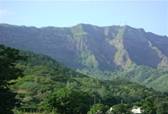 |
| Contour furrow ridges | - The system consists of constructing of parallel ridges, made of earth, on the contour line spacing on the slope at a distance of 5 m about and forestry species are planted in the contour furrow ridges. The soil is excavated and placed downslope to form a ridge, and collects run off from the catchment between ridges. A diversion ditch may be necessary to protect the system against runoff from outside. |
- Reduce the speed of running water. - Rainfall water harvesting. - Increase water infiltration. - The water harvested improves the growth of plants. - The technology is very effective, for rainfed cropping, for reforestation (with fruit trees is humid zone). |
- Availability of local man-power to implement the the techniques. - This technology guarantees the success of afforestation. - Require little maintenance - Effective on erosion reduction and sediment transport. - Implementation is easy and cheap |
- Cannot be used for slopes equal or higher than 50 % | 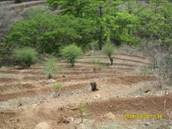 |
